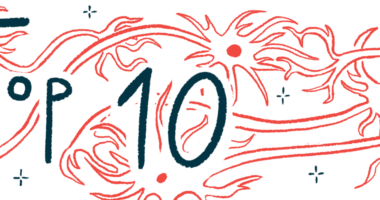Research grant provides $7.3M for NU-9 development
Northwestern researchers see potential uses in ALS, other diseases

Researchers at Northwestern University received a $7.3 million research grant from the National Institute on Aging to expand their work on NU-9, which has shown promise in amyotrophic lateral sclerosis (ALS) preclinical studies, and explore its effectiveness in other neurodegenerative diseases.
The institute is a division of the National Institutes of Health.
Akava Therapeutics is developing NU-9 for ALS under the name AKV9. The company was founded by Richard B. Silverman, PhD, a Northwestern professor who co-led the team that discovered NU-9 and its potential for neurodegenerative conditions. The company announced in August 2023 that it would launch a Phase 1 clinical trial of AKV9 in healthy volunteers, after the U.S. Food and Drug Administration granted the treatment investigational new drug status.
“This drug has us very excited and hopeful about its potential to improve the lives of ALS and other neurodegenerative disease patients,” Silverman said in a university news story.
Many neurodegenerative diseases, including ALS, are characterized by the accumulation of abnormal protein clumps in nerve cells. These toxic clumps are thought to contribute to nerve cell dysfunction and death.
‘Like garbage inside a cell’
Researchers developed NU-9 after screening more than 50,000 compounds that could inhibit aggregation of the SOD1 protein, which is often mutated in ALS, and reduce the toxicity of the abnormal clumps. NU-9 is an optimized version of one of the identified compounds.
The protein clumps “are like garbage inside a cell,” said P. Hande Ozdinler, PhD, a neurology professor at Northwestern and co-creator of NU-9. “The cells cannot clean up and eventually suffocate,” said Ozdinler, principal investigator of the new grant. “NU-9 works by cleaning the house. Then neurons regain health within the brain circuitry.”
Early preclinical work led by Silverman and Ozdinler found that NU-9 restored the health of upper motor neurons in ALS mouse models with toxic clumps of the SOD1 or the TDP-43 proteins.
Upper motor neurons are specialized nerve cells that send signals from the brain to the spinal cord to control voluntary movement. Degeneration of these nerve cells occurs early in ALS, before symptoms are evident, but drug discovery efforts in ALS never considered improving their health as a potential treatment strategy, according to Akava.
NU-9 also improved the integrity of mitochondria, the cells’ powerhouses, and the endoplasmic reticulum, which is essential for producing and processing proteins, in these upper motor neurons. These cellular organelles are often dysfunctional in ALS and other neurodegenerative diseases.
“NU-9 acts on some of the shared causes of neurodegeneration, so we thought it may have a broader impact beyond ALS,” said Ozdinler. “[Frontotemporal dementia] and Alzheimer’s disease share many cellular problems with ALS. For example, all three diseases affect mitochondria, the endoplasmic reticulum, brain inflammation and axon transport. If NU-9 is effective against those problems in ALS, it makes sense that it would also be effective in similar diseases.”







